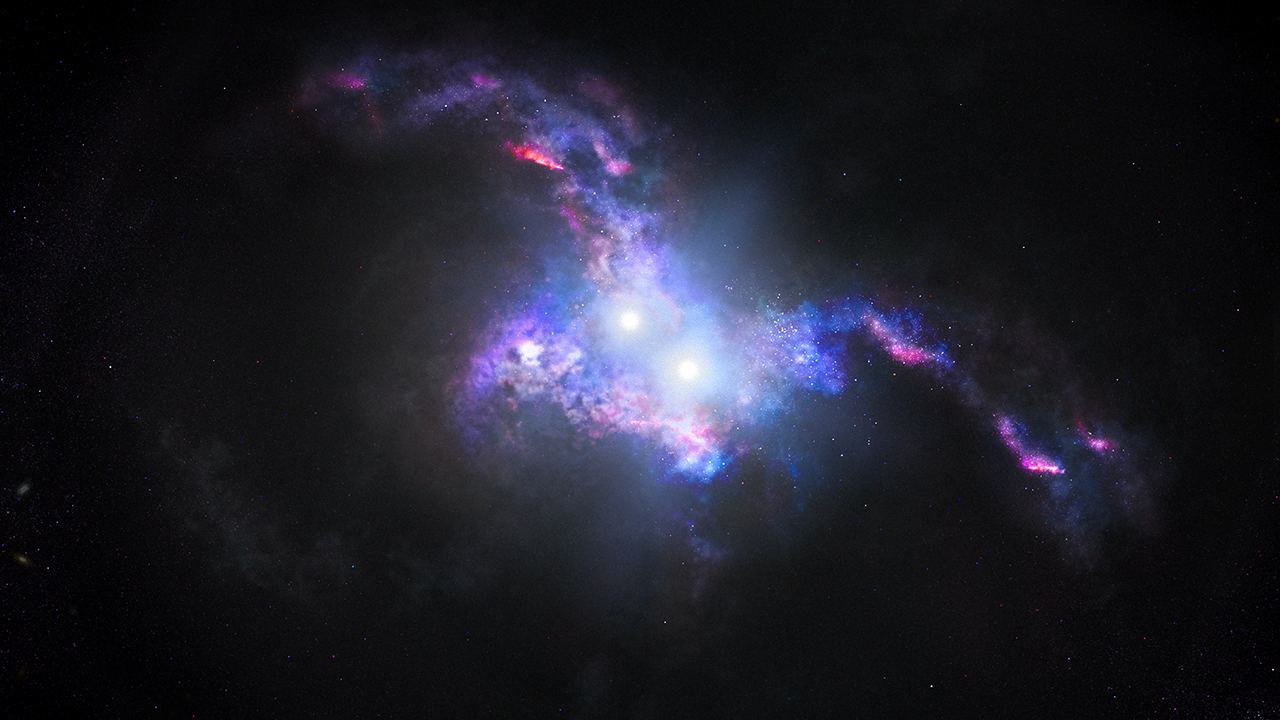What’s better than a quasar? That’s right, two quasars. Astronomers have spotted for the first time two rare double-quasars, and the results show us the dynamic, messy consequences of galaxy formation.
Every galaxy is thought to host a supermassive black hole in its center. When galaxies merge, their black holes merge along with them. During the height of the merger process, huge volumes of gas and dust swirl down to the center of the galaxy. As all that gas and dust compresses down into the black hole, it heats up.
The forces are so intense that the cores of these galaxies become “quasars”, blazing brighter than millions of normal galaxies put together and beaming massive jets of radiation thousands of lightyears into space.
Astronomers have long observed many of these quasars, and many more normal galaxies. But double quasars? These would represent galaxies in a state of mid-merger, where gas and dust has compressed onto the core but the black holes themselves have not yet merged. Since it’s such a brief phase of the merger evolution, astronomers had not yet observed any.
Until now. Twice.
“We estimate that in the distant universe, for every 1,000 quasars, there is one double quasar. So finding these double quasars is like finding a needle in a haystack,” said lead researcher Yue Shen of the University of Illinois at Urbana-Champaign.
The astronomers devised a technique that looked for subtle flickers in the brightness of quasars, a sign that the light we see may be from two competing cores rather than a single unified black hole. With the two sets of doubles on hand, astronomers can begin to directly probe this extremely violent phase of galaxy evolution.
“This truly is the first sample of dual quasars at the peak epoch of galaxy formation with which we can use to probe ideas about how supermassive black holes come together to eventually form a binary,” said research team member Nadia Zakamska of Johns Hopkins University in Baltimore, Maryland.
“Quasars make a profound impact on galaxy formation in the universe,” Zakamska said. “Finding dual quasars at this early epoch is important because we can now test our long-standing ideas of how black holes and their host galaxies evolve together.”
With the new technique, hopefully astronomers can catch a lot more quasars in the act. Their Nature Astronomy article is a “proof of concept that really demonstrates that our targeted search for dual quasars is very efficient,” said team member Hsiang-Chih Hwang, a graduate student at Johns Hopkins University and the principal investigator of the Hubble program. “It opens a new direction where we can accumulate a lot more interesting systems to follow up, which astronomers weren’t able to do with previous techniques or datasets.”


I look and all I see is a giant owl with glowing eyes and extended claws, diving at some unseen prey!